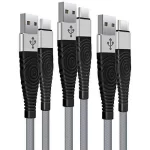Title: Advantages of Cross-linked Polyethylene Cables over Oil-paper Cables
Introduction:
As technology advances, the demand for efficient and reliable electrical systems has increased. In this regard, the choice of cables plays a crucial role in ensuring the safety and longevity of power transmission and distribution networks. Two commonly used cable types are cross-linked polyethylene (XLPE) cables and oil-paper cables. This article aims to highlight the advantages of XLPE cables over oil-paper cables.
1. Enhanced Dielectric Properties:
One significant advantage of XLPE cables is their superior dielectric properties compared to oil-paper cables. XLPE insulation has a higher dielectric strength, allowing it to withstand higher voltages without breakdown. This characteristic reduces the risk of electrical faults and enhances the overall safety and reliability of the electrical system.
2. Improved Thermal Performance:
Another key advantage of XLPE cables is their excellent thermal performance. XLPE insulation has a higher thermal rating than oil-impregnated paper insulation. It can handle higher operating temperatures without degradation, reducing the risk of insulation failure due to thermal stress. This feature increases the overall capacity and efficiency of the cable system.
3. Resistance to Environmental Factors:
XLPE cables have remarkable resistance to environmental factors such as moisture, chemicals, and UV radiation. Unlike oil-paper cables, XLPE insulation is not prone to moisture absorption, which can cause deterioration of the electrical properties. Additionally, XLPE cables can withstand exposure to various chemicals present in industrial or underground environments. Moreover, they have excellent resistance to UV radiation, making them suitable for both indoor and outdoor applications.
4. Improved Flexibility and Installation:
XLPE cables offer greater flexibility compared to oil-paper cables. This flexibility makes them easier to handle and install, particularly in confined spaces or complex cable routing scenarios. The reduced weight of XLPE cables also contributes to more straightforward installation, reducing labor requirements and overall costs.
5. Longer Lifespan and Reduced Maintenance:
XLPE cables have a significantly longer lifespan than oil-paper cables. Their robust insulation system and resistance to environmental factors contribute to extended cable life, resulting in reduced maintenance and replacement costs. Moreover, the absence of oil in XLPE cables eliminates the need for periodic oil testing and maintenance procedures, further reducing maintenance requirements.
6. Environmentally Friendly:
In recent years, there has been an increasing emphasis on environmentally friendly technologies. XLPE cables fulfill this criterion as they are free from oil, making them more environmentally friendly than oil-paper cables. The absence of oil eliminates the risk of oil leaks or spills, which can have detrimental effects on the ecosystem. Additionally, XLPE cables can be recycled, reducing waste and promoting sustainability.
Conclusion:
Cross-linked polyethylene (XLPE) cables offer numerous advantages over oil-paper cables in terms of dielectric properties, thermal performance, resistance to environmental factors, flexibility, installation, lifespan, maintenance, and environmental friendliness. These advantages make XLPE cables the preferred choice for modern power transmission and distribution networks, contributing to safer, more reliable, and efficient electrical systems.
.webp)
